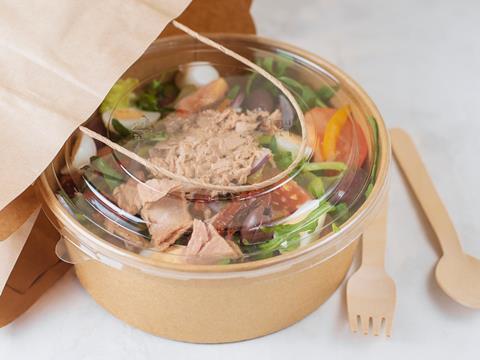
A PROPAKMA study commissioned by Veolia and Forum Rezyklat intends to help manufacturers ensure that the application of barrier coatings does not impact the recyclability of their fibre-based packaging by offering new guidelines.
Fibre-based packaging is gaining popularity in the food and consumer goods sectors – yet, in these applications, barrier materials like plastic coatings or polymer films can become necessary to protect the product. These interfere with the recyclability of a pack in paper waste streams.
Titled ‘Basics of fiber-based packaging with barrier coating – barrier requirements’, the study aims to provide guidelines on designing barrier packaging for recycling processes, from collection and sorting to processing and the conversion of recyclate into new pulp. It is also intended to identify and overcome potential roadblocks to its recyclability.
It defines the ideal barrier as a product that combines functionality – product protection, for example – with recyclability. This can entail compatibility with sorting processes, detachable components, microbial stability, surface charge, thermal behaviour, and hydrophobicity.
The study also recommends that manufacturers consider their selection of materials, take care when it comes to mixing polymers, and ensure stability against swelling, abrasion, water solubility, and mechanical defibration. It also warns against the use of compostable materials due to microbial degradation in the paper production process.
“The results of the study provide a valuable basis for design for recycling and the material cycle of fiber-based packaging,” says Guido Adomßent, COO of the Veolia Umweltservice Group. “This is intended to make it easier for those placing packaging on the market to differentiate between different materials in order to better classify their recyclability.”
Veolia continues that European legislation and the minimum standard for recyclable packaging should be developed further, establishing industrial standards and harmonizing recyclability criteria. This should include the classification of recyclability, suitability, disposal, and environmental pollution.
Until this point, the company believes that packaging manufacturers will have limited assurance that the product they are developing can truly be considered sustainable.
Diana Uschkoreit, managing director of the Veolia subsidiary BellandVision and head of the Technology and Recyclability specialist package in the Rezyklat Forum, says: “Packaging now fulfills different functions in the areas of functionality, recyclability, legal compliance and marketing and at the same time has technical requirements such as barrier properties and light protection on the durability of the products. The sum of these properties often presents a mono-material with challenges.”
Veolia adds its view that consumers remain the most important factor in the waste recycling process – emphasizing the importance of separating waste and disposing of components in the correct waste streams.
In its own report, Rabobank has cautioned that replacing paper packaging with paper could prevent recyclability and biodegradability by requiring the addition of extra barriers or layers. It also fears that the transition could result in higher energy consumption and increased carbon emissions.
On the other hand, companies continue to seek sustainability-minded barrier solutions. For example, Xampla intends to expand its biodegradable, food-safe Morro Coating for takeaway packaging, sachets, and cups with the equivalent of €6,466,250 raised in its latest funding round.
If you liked this article, you might also enjoy:
The Lidl approach to packaging sustainability
How did Brazil achieve its 100% aluminium can recycling rate – and can it be replicated in the EU?
Experts have their say on the EU’s Packaging and Packaging Waste Directive revisions
A deep dive into the most important packaging sustainability trends and solutions












No comments yet